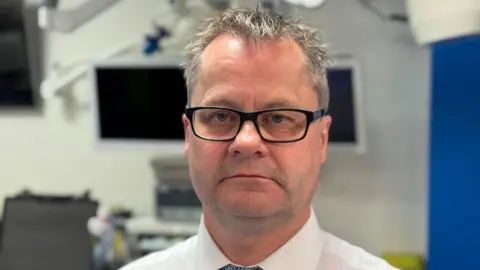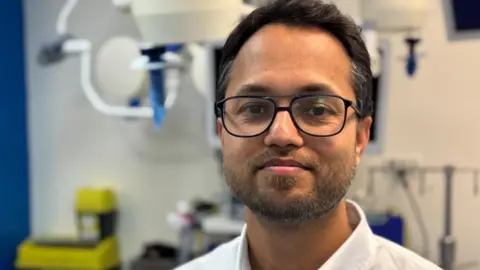'Tailored new hips will help people turn back time'
 BBC
BBCPersonalised hip replacements will help patients turn back time, a surgeon has said.
A team at University Hospitals Coventry and Warwickshire (UHCW) NHS Trust are using computer models to rebuild a patient's hip so it can move in the same way it did before sugery was needed.
Postman Steve Price has already had a hip replaced but now needs the other one doing. Prof Richard King from the NHS trust said the technology will "turn back time" for people like Mr Price, who currently has trouble putting on his socks.
"What we're trying to do is reverse engineer the patient's hip back to how it was before they got arthritis," he said.

According to the NHS, osteoarthritis is the leading cause of hip replacements.
Mr Price said his job meant he still had to walk 10 miles (16.1km) a day despite waiting for his hip replacement.
"It stopped my sport for a while, but it's the more mundane things in life that catch you out," he said.
"Simply putting a sock on became a real problem."
Medical teams previously relied on already sophisticated technology such as lasers and 3D-printers.
Warwick Manufacturing Group (WMG) is working with the hospital trust, using reflectors and sophisticated cameras, to capture all the ranges of patient's hip motion and create the computer models.
Dr Arnab Palit from WMG said the technology meant it was possible to simulate different activities.
"You can then mimic what the patient used to do and identify their range of motion when their hip was good."
Prof King added it was important for each replacement to be personalised as everybody's hip moved differently.
The use of computer simulations mean we are able to make sure the replacement will move in the same way as the patient's real hip, he said.

Follow BBC Coventry & Warwickshire on BBC Sounds, Facebook, X and Instagram.
